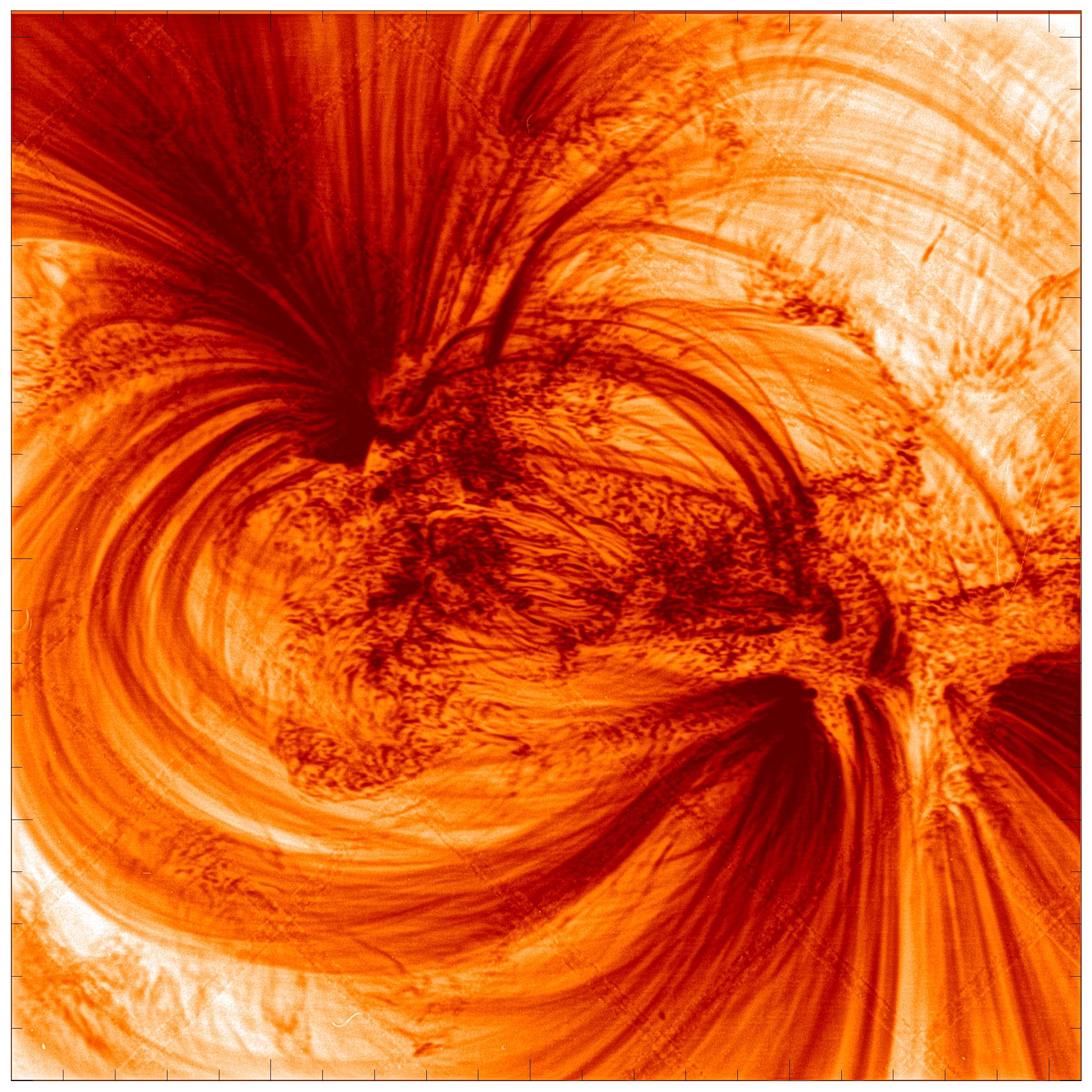Image showing the sharpest image of the Sun’s million-degree outer atmosphere represents March in 2021 NASA Explore Science Calendar
A University of Central Lancashire (UCLan) image showing the highest-ever resolution views of the Sun’s outermost atmosphere has been chosen to appear in the 2021 NASA Explore Science Calendar.
It is one of several taken during the High-Resolution Coronal Imager (Hi-C) sounding rocket mission in 2018 that display strands of million-degree solar material as small as 70km in size, or around 0.01% the size of the Sun, making them the highest resolution images ever taken of the Sun’s outer atmosphere or corona.
Hi-C took this image on its third flight on a sounding rocket that makes brief journeys into space before falling back to Earth. A UCLan academic team, led by professor of solar physics at UCLan and institutional lead for the Hi-C team Robert Walsh, were integral to the sounding rocket instrument launch as well as working on the observational data analysis.
The image has been chosen to represent March 2021 on the official NASA Explore Science 2021 Calendar and appears alongside other outstanding pictures captured from various NASA missions including ones by the Hubble Space Telescope and from the International Space Station.
"We’re very honoured to have this image selected for the NASA Explore Science Calendar. It is fantastic that our collaboration with colleagues at the NASA Marshall Space Flight Center has been recognised in this way and we are in good company alongside other amazing and high calibre NASA projects. It reflects just how much of an impact this piece of research has made as we try to understand the basic nature of our closest star."
— Professor of Solar Physics and institutional lead for the Hi-C team Robert Walsh
Professor Walsh said: “We’re very honoured to have this image selected for the NASA Explore Science Calendar. It is fantastic that our collaboration with colleagues at the NASA Marshall Space Flight Center has been recognised in this way and we are in good company alongside other amazing and high calibre NASA projects. It reflects just how much of an impact this piece of research has made as we try to understand the basic nature of our closest star.”
The scientific paper Professor Walsh and UCLan colleague Dr Tom Williams published earlier this year on this Hi-C data, which unveiled the images for the first time, is now the one of the most read papers on the Astrophysical Journal website with over 24,500 downloads in just seven months.
As the images show the Sun’s outer-layer in ultra-high definition, they will assist the Hi-C team in understanding the flow of energy through the Sun and down to Earth, which in turn will help to predict the dynamic behaviour of the star. The next planned sounding rocket flights to develop this research are in August 2021 and mid-2023.
NASA’s 2021 Explore Science Calendar is available to download for free on the NASA website.



